|
Social
News 24/8
Quang Tri to
take action to promote “bai choi”
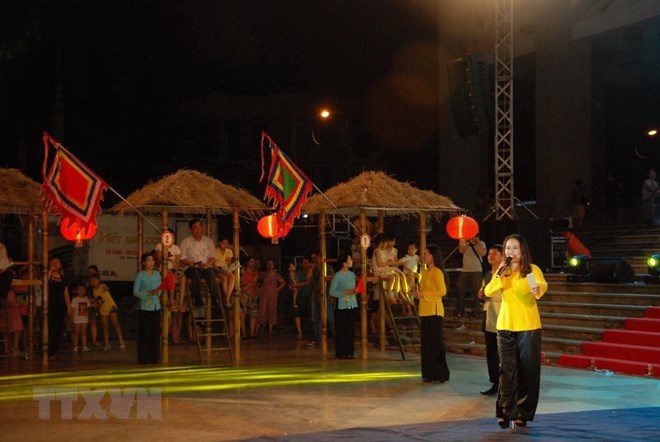
A performance of "bai
choi" singing
The People’s Committee of central Quang Tri province
has adopted a plan to preserve and promote the intangible cultural heritage
of “bai choi” activities from 2018-2023.
Accordingly, Quang Tri will spend about 1.8 billion VND
(77,500 USD) on a set of measures to preserve and promote the traditional art
form, including organising classes for young people on the practice of “bai
choi”; supporting artisans, clubs, and communities performing “bai choi”; and
promoting “bai choi” as a traditional art for cultural and tourism
development.
Since 1990, “bai choi” festivals have been recreated
across villages in Quang Tri, for example in Tung Luat and Co My villages in
Vinh Giang, Vinh Linh, as well as in Ngo Xa Tay village in Trieu Trung, Trieu
Phong. The practice has mostly been passed down orally through the
generations. However, most “bai choi” artisans are now quite old, putting the
art at risk of sliding into oblivion.
In December last year, the art of “bai choi” was
awarded UNESCO status in the 12th session of the Intergovernmental Committee
for the Safeguarding of Intangible Cultural Heritage held in Jeju Island in
the Republic of Korea.
The art originated almost 400 years ago, when Dao Duy
Tu, an outstanding mandarin under the reign of the Nguyen Lords (1558-1777)
who later formed the Nguyen Dynasty (1802-1945) in Hue, created the game to
entertain the community during their post-harvest time.
“Bai choi”, which literally means a deck of cards (bai)
and bamboo huts (choi), is half a game and half theatre performance. Nine
bamboo huts on stilts are erected on a spacious land plot, in two rows, each
made up of four huts for the players. The bigger hut is in the middle, with a
wooden stand for the controller of the game.
One to three players share a hut while the audience
surrounds the rectangular playing plot. At the beginning of each game, each
hut receives three cards. The controller sings folk songs that include the
names of 27 cards, giving clues to the players as to what their cards might
be. The aim is for the players to guess their cards.
The players must find the name of the card being
mentioned in the verses in the song, and then find out the coinciding cards
in their hands. The winner is the first hut to have three cards that coincide
with the names given by the controller.
The controller’s singing, dancing, and other gestures
are accompanied by music played on traditional instruments and cheers from
the audience. ”Bai choi” stories include lessons on morality and compassion,
as well as love for the village and the nation.
The art reflects the spirit of human solidarity. All
the villagers, both audience members and players, are drawn into the joyful
ambiance for the purpose of sharing happiness and solidarity.
“Bai choi” is Vietnam’s tenth cultural practice to
receive the title from UNESCO. The art was awarded intangible heritage status
thanks to a creative recreation within a village community.
Nghe An province addresses flood consequences
Authorities in Nghe An province’s Ky Son district have
instructed local forces to actively work with residents to address the
consequences of recent floods on Nậm Mộ river.
Hundreds of local officials, border soldiers and police
force joined hands with residents in Ky Son district to clean mud on streets,
office buildings and residential houses.
They also helped clean local schools quickly because
the new school year is around.
All people have been actively address the post-flood
situation to ensure residents can resume their daily activities.
Painting exhibition in Hanoi marks National Day
A painting exhibition kicked off on August 20 at the
Exhibition House, 16 Ngo Quyen Street, Hanoi, as part of activities to mark
the 73rd anniversary of the August Revolution (August 19) and National Day
(September 2).
Tran Khanh Chuong, President of the Vietnam Fine Arts
Association, said his association received 2,500 works by 1,828 painters for
the exhibition – of which 1,345 were selected for display at the eight
regional exhibitions.
The Hanoi exhibition showcased 120 paintings in different
materials – such as oil, lacquer, silk, and acrylic – by 124 artists, he
added.
The event will last until August 30, 2018.
Seminar discusses use of robotic technology in Vietnam
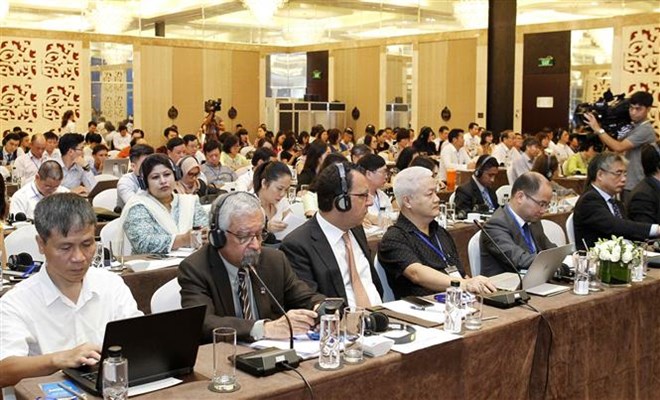
Enhancing connectivity between
foreign scientists and domestic universities and institutes is a basic
solution to further boosting the application of robotic and mechatronic
technology in different fields in Vietnam, experts have suggested.
They raised the suggestion during a seminar on “robotic
and mechatronic technology in the fourth industrial revolution: demand and
solutions for Vietnamese firms”, which was co-hosted by the Ministry of
Industry and Trade (MoIT), the Ministry of Science and Technology and the
Ministry of Planning and Investment in Hanoi on August 21.
The MoIT reported that the number of Vietnamese
enterprises using new technologies, especially core ones in industry 4.0 in
manufacturing, remains modest.
As over 97 percent of domestic businesses are micro,
small and medium-sized enterprises (MSMEs), they have met difficulties
regarding capital, technological expertise, human resources and innovation
capacity while their linkage with sci-tech organisations remains
limited.
Deputy Minister of Industry and Trade Cao Quoc Hung
suggested that foreign scientists, domestic universities and research
institutes should work closely together to conduct scientific studies, open
training courses, and hold scientific seminars.
He also expected them to offer advices to Vietnamese
enterprises in the process of renovating manufacturing technologies and
developing new products.
Ho Anh Van, Dean of the Materials Science Faculty under
the Japan Advanced Institute of Science and Technology (JAIST), said apart
from industrial production, robots could be used in agriculture, fruit
picking, health care, care for the elderly and surgery
He added that JAIST is partnering with Vietnamese
researchers to pilot manufacturing robots and hoped that they could be used
more widely in the country in the near future.
The event attracted hundreds of Vietnamese
technological experts and scientists from countries worldwide.
VN needs to optimise artificial intelligence for
development: official
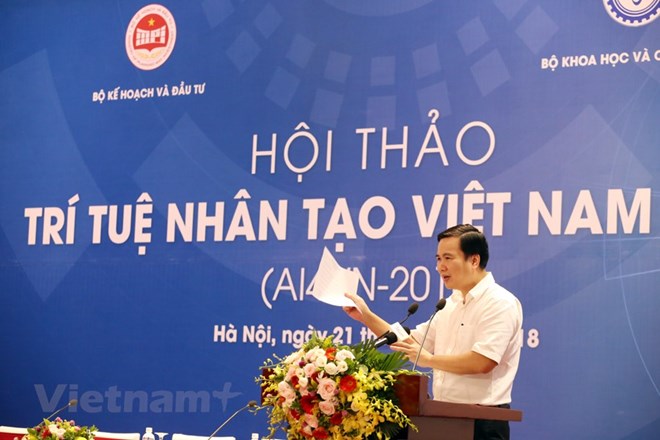
Deputy Minister of Science and
Technology Bui The Duy
Vietnam has seen remarkable development in artificial
intelligence (AI) and the country needs to take full advantage of AI for its
development, said Deputy Minister of Science and Technology Bui The
Duy.
“AI must look toward application in developing
products,” Duy said at a seminar on Vietnam’s AI development (AI4VN 2018)
held in Hanoi on August 21.
The event, hosted by the Ministry of Science and
Technology, was part of the Programme of Connecting Vietnam Innovation
Network 2018 held from August 18-24 with the participation of overseas
Vietnamese science and technology experts.
The AI4VN 2018 aimed to share the strategic vision and
viewpoint of the country’s leaders on opportunities to access and apply
achievements of the fourth Industrial Revolution (Industry 4.0) in key
sectors.
It looks to collect expert’s experience in AI research
and training, along with technology transfer and application for the
country’s development. It also offers chances for overseas Vietnamese experts
and scientists to connect with their peers who live in the country.
At the event, participants discussed specialised
methods and technology in AI sector in accordance with policies and
resources, which serve as a foundation for AI research and development in
Vietnam in the coming time.
The deputy minister revealed that the AI4Life 2018 is
scheduled to take place later this year, hoping to foster AI development and
application in business.
Accordingly, it will deliver technologies and research
outcomes developed by Vietnamese universities, research institutions and
businesses operating in the sector.
Australia aids gender equality project via agriculture,
tourism in Lao Cai
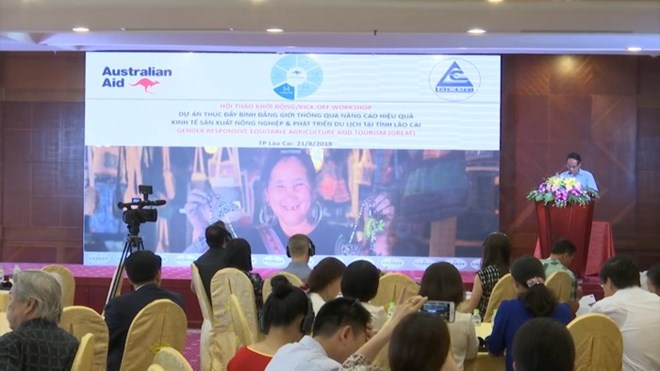
At the launching event
The Lao Cai People’s Committee and the Australian
Embassy in Vietnam held a workshop in the northern mountainous province on
August 21 to launch the Gender Responsive Equitable Agriculture and Tourism
(GREAT) project.
The project, worth nearly 300 billion VND (12.9 million
USD), includes the Australian government’s non-refundable official
development assistance (ODA) capital and the corresponding capital from the
local budget.
It aims to promote gender equality and increase the
social-economic status of women in Lao Cai through improving the efficiency
of agriculture and tourism development.
The project will be carried out from 2018 to 2021 in
Bat Xat, Muong Khuong, Bac Ha, Sa Pa, and Van Ban districts.
Justin Baguley, Counsellor of Economic and Development
Cooperation at the Australian Embassy in Vietnam, said the Australian
government has implemented a number of activities to support the development
of Lao Cai.
Through this project, Australia hopes to further
enhance cooperative relations with Vietnam, and particularly Lao Cai, as well
as empower women in disadvantaged areas, he added.
The project aims to increase the incomes of at least
20,000 women and generate new, paid jobs for 2,000 others by 2021.
At least 15 percent of enterprises or cooperatives will
be led and co-managed by women.
The project will also support the development of policy
dialogues and attract 6 million USD from the private sector to conduct
business activities.
Ca Mau Cape tourism site plan approved
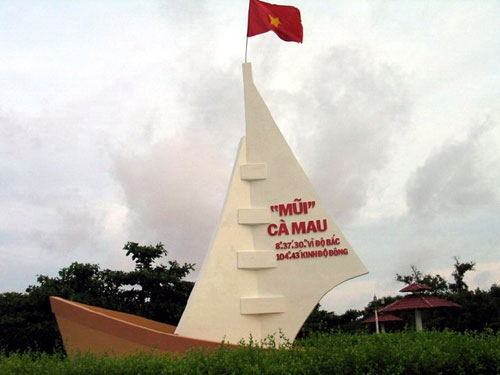 Prime Minister Nguyen Xuan Phuc has approved a master plan for the development of a national tourism site at Ca Mau Cape. Ca Mau Cape tourism site expected to attract 2 million visitors by 2030 Under the plan, the tourism site is expected to draw around two million visitors by 2030, generating revenues of VND5 trillion (USD227.27 million) and creating jobs for 3,000 people. Ca Mau Cape tourism site located in Ngoc Hien and Nam Can districts would cover 2,100 hectares. It would be developed into one of Vietnam’s largest eco-tourism centres and could become a popular destination on Mekong Delta tours. The site would help connect Ca Mau and other tourism sites in the Mekong Delta such as Phu Quoc Island in Kien Giang Province. By 2025, Ca Mau Cape tourism is expected to meet national tourism criteria and be recognised as a National Tourism Site, according to the prime minister-approved master plan for the development of Ca Mau Cape National Tourism Site towards 2030. The site would offer travellers options for sightseeing and exploring. It will begin by focusing on attracting high-end tourists and focus on resort tourism, eco-tourism and entertainment. By 2030, high-end tourism will be the site’s priority. For the domestic market, the Ca Mau Cape tourism site continues to focus on its main market of visitors from HCM City, the southeast region, the Mekong Delta provinces, Hanoi and the northern provinces. For the international market, priority will be given to target markets such as tourists from the US, Australia and northeast Asia, including South Korea, China and Japan. The prime minister has instructed Ca Mau Province to work with the Ministry of Planning and Investment and the Ministry of Culture, Sports and Tourism to call for investment into the project.
Khanh Hoa to crack down on taxi services

Tourists in Nha Trang
Vice Chairman of Khanh Hoa Province People's Committee
Tran Son Hai has asked the police, Department of Transportation and Nha
Trang’s authorities to tighten management over transportation services,
especially taxi firms, after overcharging incidents.
Hai demanded local authorities to strictly punish
violations and withdraw business licenses if necessary.
Nguyen Van Thanh, vice head of Nha Trang-Khanh Hoa
Province Tourism Association said, "Let's not mention a business's
reputation yet, on the moral ground alone, overcharging is unacceptable. What
will the tourists think?"
In July, Nha Trang-Khanh Hoa Province Tourism
Association filed a report about a local taxi driver who charged three South
Korean tourists VND200,000 (USD8.70) compared to a usual price of around
VND25,000 for a trip from Havana Nha Trang Hotel to Rosaka Nha Trang Hotel.
The driver also insulted the tourists and threatened the hotel guard.
The driver was later identified as Nguyen Than. He
works for Dinh Thinh Thanh Tuyen who hasn't been granted the business licence
to running taxi service and was fined VND8.5m (USD340).
In September 2017, a Chinese tourist went to the police
to report about being charged VND6m (USD240) for a less than 6-km trip even
though it was only VND62,000 on the taxi meter. The driver at first forced
the tourist to pay VND7.1m. Being scared by the driver's threats, the tourist
paid VND3m and was forced to pay another VND3m to be let out of the taxi.
The police quickly found the driver and made him return
the money.
Khanh Hoa Department of Tourism said overcharging
incidents had badly affected Nha Trang's tourism. The Department of
Transportation was asked to manage the taxi service and build a management
plan and find unlicensed businesses.
Vietnamese puppetry shines in Russia
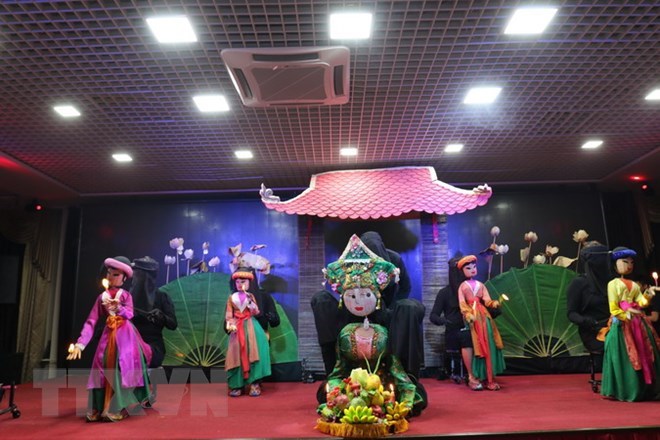
A performance by the Vietnam
National Puppetry Theatre in Russia
Artists from the Vietnam National Puppetry Theatre
treated Vietnamese expatriates in Russia to a show at the Hanoi-Moscow
Complex (Incentra) on August 21.
The show drew a crowded audience and rounds of
applause.
Earlier, the Vietnamese troupe took part in the
Petrushka World Puppet Carnival in Yekaterinburg from August 12 – 20. The
event attracted the participation of 30 countries, with 40 performances
staged. Vietnam won top prize and was recognised as the best puppet-design
team.
While in Yekaterinburg, the troupe also hosted a show
for the Vietnamese community.
General Manager of the theatre Ngo Thanh Thuy said that
the team is deeply moved when performing for Vietnamese in Russia.
According to Thuy, many expatriates said since they
moved to Russia, this was the second time they had saw a show by a national
art troupe of Vietnam in the host country. They said the performance reflects
the cultural life of Vietnamese farmers which is so close and familiar to
them, she added.
Thuy stressed that her team is proud of growing
Vietnamese traditional puppetry art and finishing the Yekaterinburg carnival
as one of the top troupes.
The Vietnam National Puppetry Theatre has a
60-year-long history of development, housing a significant number of leading
puppetry researchers, directors, visual artists, fine art decorators and
puppet performers.
Australia announces application for 2018-2019 DAP

A DAP-funded project for the
oncology hospital in HCM City (Photo courtesy of the Australian Consulate
General in HCM City)
The Australian Consulate General in Ho Chi Minh City
announced on August 20 that it has opened applications for the grants round
for the 2018-2019 Direct Aid Programme (DAP), which is dedicated to projects
in provinces and cities from Da Nang southwards.
Community groups, non-government organisations,
government organisations and other non-profit groups are encouraged to apply
for grants of up to 20,000 AUD (15,000 USD) for small-scale development
projects.
This year the DAP will be focusing on healthcare, women’s
economic empowerment, gender equality, environmental protection, and
education and training. However, other areas will also be considered. The
deadline for applications is September 28.
DAP funding is competitive. In 2017-2018 the Australian
Consulate-General funded 17 projects out of the 153 applications received,
worth 240,000 AUD.
Information on DAP in the northern provinces is
available at the Australian Embassy on its Hanoi website.
Measures sought for Hanoi’s urban development
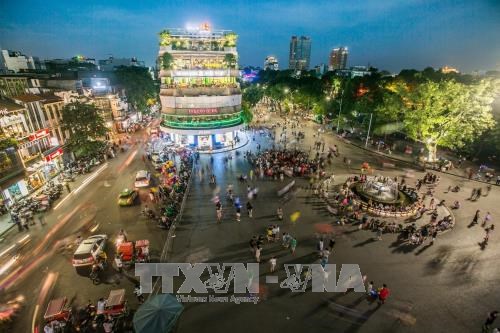
The pedestrians' space around Hoan
Kiem Lake and Hanoi Old Quarter, which is popular destinations for Hanoians
and tourists
Hanoi has been focused on building its electronic
government and smart city system, Chairman of the municipal People’s
Committee Nguyen Duc Chung has said.
The official made the statement during a working
session in Hanoi on August 20 with over 100 overseas Vietnamese science and
technology experts who attend an innovative network connection programme from
August 18-24.
Chung noted that Hanoi is among the 17 largest capital
cities in the world, with a population of about 10 million. Over 10 years of
administrative boundary expansion, the city enjoys an annual growth speed of
7.41 percent.
To date, Hanoi has established a wide area network
(WAN) in all 584 localities of 30 districts, he added.
However, the city currently faces major challenges in
terms of urban development, namely rapid population growth and environmental
issues as 97 percent of waste is dumped in landfill sites. Additionally, the
rate of labourers without training remains high, especially in management and
information technology.
The official voiced his hope that the participants will
connect domestic and foreign experts and scientists to seek solutions to
these challenges, contributing to the development of Hanoi and the nation at
large.
At the session, participants discussed ideas to address
various issues related to urban areas and socio-economic development in
Hanoi.
They shared their experiences in building smart cities,
as well as advanced technologies in transport, healthcare, education, and
environmental protection, among others.
They also showed willingness to cooperate with the city
in attracting high quality human resources and applying modern technology.
Chung asked the experts and scientists to connect with
local authorities via the startup portal startupcity.vn. The sound
collaboration between the city and the innovative network connection
programme will create favourable conditions for them to contribute further to
the nation, he said.
Ca Mau speeds up construction of breakwater on erosion
threat
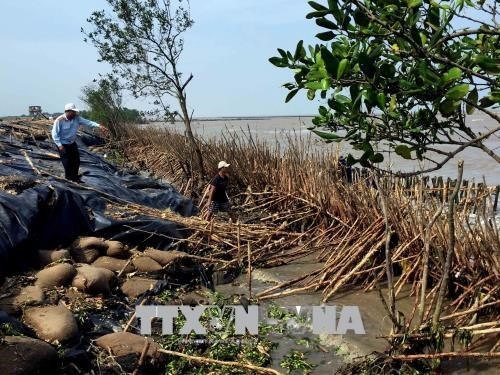
Erosion is becoming more serious at
coastal areas around Rach Goc seaport in Ca Mau province’s Ngoc Hien
district.
The southernmost province of Ca Mau is speeding up
construction of more than 4.2km of breakwater to prevent erosion and protect
residential areas along its eastern coast, said the provincial Department of
Agriculture and Rural Development.
It is expected to cost over 110 billion VND (4.8
million USD), which is sourced from the Government’s reserve funds for
localities in the Mekong Delta set up under the Prime Minister’s Decision No
795.
A 2km section will be built near Rach Goc port and the
rest at Vam Xoay port in Ngoc Hien district.
Ly Hoang Tien, Chairman of the People’s Committee of
Ngoc Hien district, said the district has signed up capable contractors to
speed up construction of the Rach Goc section.
The task is urgent to prevent erosion and ensure the
safety of lives and properties in residential zones near the port, he said.
The Ba Ria-Vung Tau Urban Sewerage and Development Ltd
Company (BUSADCO) is the contractor. The company has promised to complete the
construction on schedule.
A BUSADCO spokesperson said the company is using
pre-fabricated barriers to protect riverbanks and sea dykes.
Pre-fabrication helps overcome many challenges posed by
weather, climate and hydrology, and makes it easy to operate and maintain
breakwater, he said.
Besides, the construction takes only one third the
usual time and costs at least 20 percent less than traditional methods, he
said.
The province has petitioned the Government for another
316 billion VND (13.9 million USD) to build more than 11.3km of embankments
along its eastern coast where erosion is becoming severe due to the effects
of climate change.
Deputy PM asked for sustainable development in ethnic
minority areas
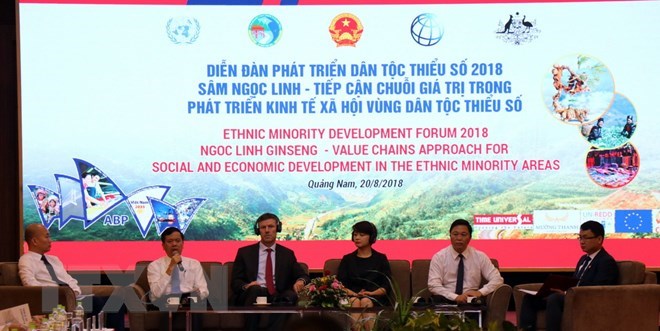
At the forum
Promoting rapid and sustainable development in ethnic
minority and mountainous areas, and narrowing the development gap between
them and other areas is the Party and State’s consistent policy in the
national socio-economic development, Deputy Prime Minister Truong Hoa Binh
has said.
The Deputy PM asserted this at a forum on ethnic
minority development held in the central province of Quang Nam on August 20,
which was jointly organised by the Committee for Ethnic Minority Affairs, the
provincial People’s Committee, the UN’s office in Vietnam and the World Bank
in Vietnam, and development partners.
Themed “Ngoc Linh ginseng - value chain approach for
social and economic development in the ethnic minority areas”, the event saw
the participation of nearly 400 delegates from ministries, sectors,
localities, enterprises, along with experts, scientists and representatives
from international and development organisations.
During his speech, Deputy PM Binh highlighted the significance
of the event, saying that it helped collect experience in growing Ngoc Linh
ginseng from growers.
He agreed with the assessment of socio-economic
development in Vietnam’s ethnic minority areas by representatives from the
World Bank.
The Vietnamese Government is paying special heed to
directing the implementation of programmes to support ethnic minority
communities, he stressed.
Ministries and sectors, especially the Committee for
Ethnic Minority Affairs, need to roll out more breakthrough measures,
focusing on mobilising greater sources for socio-economic development in
ethnic inhabited areas, he said.
More attention should be paid to production development
in ethnic minority and mountainous areas in the direction of approaching
value chains, promoting innovation and startup activities, and creating
jobs.
Local-level leaders were advised to actively seek
opportunities and learn from lessons and experience in socio-economic
development from other localities to find their own directions in a creative
way, towards promoting rapid and sustainable development in their localities.
The Deputy PM encouraged Quang Nam and other localities
to jointly call for the involvement of enterprises in expanding cultivation
of Ngoc Linh ginseng, which was recognised as a national product.
According to the World Bank's report on Poverty
Reduction and Prosperity in Vietnam, the rate of poor households among ethnic
minority communities in Vietnam fell to 44 percent in 2016 from 57 percent in
2014.
In order to narrow the development gap, it is necessary
to have new policies, programmes and approaches, including value
chain-oriented production, focusing on products of ethnic minorities,
especially non-timber forest products (NTFPs).
Ngoc Linh ginseng is one of the typical NTFPs with high
economic value. On September 2015, the Government approved a project on
conserving and developing Ngoc Linh ginseng - the Vietnamese ginseng by 2030
with a total investment of over 9 trillion VND (387.1 million USD). Ngoc Linh
ginseng was officially recognised as a national product in June 2017.
At the forum, domestic and foreign experts discussed
how to further promote poverty reduction and sustainable forestry
development; and proposed strategies and measures for developing Ngoc Linh
ginseng products in Vietnam’s ethnic minority areas.
The Vietnamese ginseng was one of eight precious and
endangered flora genes covered in Quang Nam province’s conservation programme
for 2014-2020, including Ba Kich (poor ginseng or codonopsis), pepper,
cinnamon, large rattan and white corn.
Nam Tra My district of Quang Nam alone has developed 27
farms of Ngoc Linh ginseng on a total area of 932ha, growing 800,000 natural
ginseng plants and herbs. These farms plan to produce 1,000 tonnes of ginseng
by 2025.
Ca Mau implements master plan to develop transport
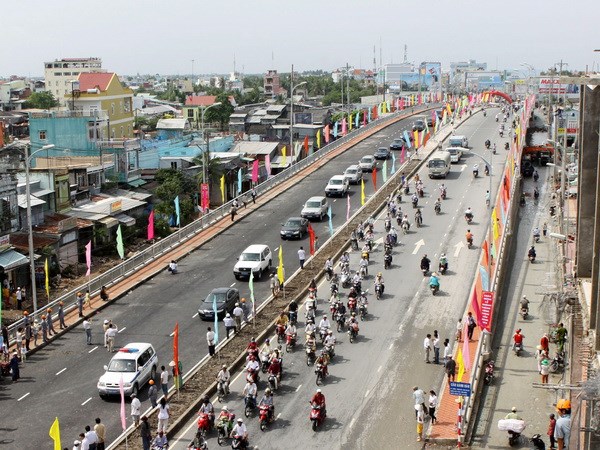
The Mekong Delta province of Ca Mau,
which is located along the southern coastal corridor linking Vietnam with
Cambodia and Thailand, is implementing a master plan to develop transport
through 2020 with a vision to 2030.
The locality is applying for the Government’s approval
of investment policies to implement some key transport projects.
The projects include the building of a National Highway
1A bypass from Ca Mau city and sections from Ca Mau
gas-electricity-fertiliser complex to the highway.
Once completed, the projects will help ease the traffic
pressure in the inner city and facilitate the southern coastal corridor to
tap local tourism potential.
Additionally, the project of upgrading and expanding
the highway from Ca Mau city to Nam Can town is expected to reduce traffic
congestions and accidents.
The province has proposed the Government supplement
capital to upgrade parts of Highway 63 through Ca Mau. A total investment of
520 billion VND (22.3 million USD) is needed.
According to the local Steering Committee for Traffic
Safety, the province put into use eight transport projects in the early
months of this year.
It carried out regular maintenance for 12 roads, three
waterways and other transport facilities.
The province is selecting contractors to implement 11
transport projects and strengthening inspections of those under construction.
Eighty-one out of the 82 communes have roads usable by
cars while 105.73km of rural roads have been concretized.
VNN
|
Thứ Sáu, 24 tháng 8, 2018
Đăng ký:
Đăng Nhận xét (Atom)
Không có nhận xét nào:
Đăng nhận xét